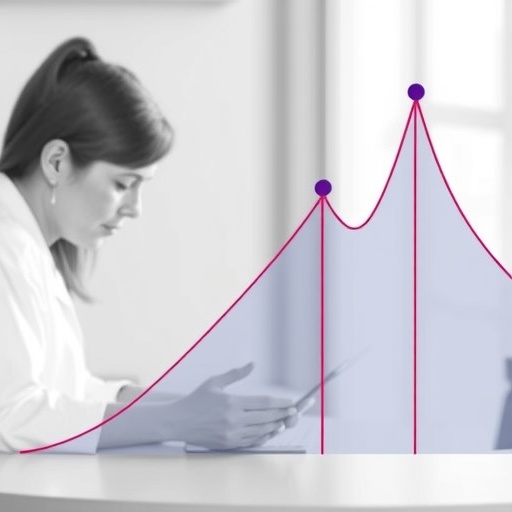Over the past decade and a half, the landscape of type 1 diabetes management has undergone significant transformation, primarily fueled by rapid advancements in diabetes technology. A large-scale cross-sectional study recently published in JAMA Network Open underscores this evolution, highlighting increased adoption of cutting-edge diabetes devices alongside improvements in glycemic control among both youth and adult populations living with type 1 diabetes. Despite these encouraging trends, the study raises critical concerns about persisting clinical challenges and widening disparities across racial, ethnic, and socioeconomic lines.
The integration of diabetes technologies — including continuous glucose monitors (CGMs) and insulin pumps — into routine care regimes has revolutionized how individuals monitor and regulate their blood glucose levels. These devices offer real-time insights and automated insulin delivery adjustments, reducing the frequency of hypo- and hyperglycemic events and thereby enhancing overall metabolic stability. The study’s data indicate that technology adoption rates have surged, reflecting both greater awareness among patients and clinicians and expanded insurance coverage policies for these advanced therapies.
Notwithstanding this technological embrace, the study reports that optimal glycemic control remains elusive for a substantial segment of the type 1 diabetes population. Glycated hemoglobin (HbA1c) levels, the clinical benchmark for long-term glucose regulation, show persistent suboptimal values in many individuals. This reveals that technology alone cannot entirely bridge the gap in diabetes outcomes. Behavioral factors, psychosocial stressors, and healthcare access difficulties contribute significantly to these ongoing management challenges.
Intriguingly, the investigation also exposes an exacerbation of health disparities over time. While overall glucose control and technology usage improve, minority populations — including racial and ethnic groups historically underserved by healthcare systems — continue to exhibit lower rates of glycemic control and reduced uptake of diabetes technology. These inequities are notably influenced by socioeconomic status, with individuals from lower-income backgrounds facing additional barriers that interfere with optimal disease management. These findings point to systemic issues underlying disease outcomes and call for targeted interventions.
The expanding chasm in diabetes management effectiveness among different demographic groups highlights the pressing need for culturally sensitive and accessible care models. Tailoring educational programs and outreach efforts to address linguistic and cultural nuances could improve engagement and adherence. Moreover, policy reforms aimed at equitable healthcare funding and insurance coverage are critical to ensure that cutting-edge diabetes technologies reach those most in need.
From a technical standpoint, the mechanistic benefits of continuous glucose monitoring are profound. CGMs employ subcutaneous sensors that continuously measure interstitial glucose concentrations, transmitting data wirelessly to insulin pumps or smartphones. This uninterrupted glucose sampling facilitates timely insulin dosing adjustments and reduces reliance on frequent fingerstick measurements. Additionally, sensor-augmented pump therapy integrated with automated insulin delivery algorithms mimics physiological insulin secretion patterns, optimizing metabolic homeostasis.
Despite these advances, psychological and behavioral hurdles remain significant barriers. Diabetes distress, fear of hypoglycemia, and regimen complexity can undermine patients’ willingness or ability to fully utilize these technologies. The rapid pace of innovation further complicates adoption, as individuals may require ongoing training and support to navigate evolving device interfaces and functionalities. Multidisciplinary care teams, including diabetes educators and mental health professionals, are therefore instrumental in supporting sustained engagement.
Epidemiologically, the sustained low prevalence of glycemic targets despite improved tools suggests that biomedical advancements need to be complemented by holistic approaches addressing social determinants of health. Food insecurity, unstable housing, and limited healthcare access disproportionately affect vulnerable populations with type 1 diabetes, impeding disease self-management. Community-based initiatives and telemedicine hold promise in mitigating these barriers by delivering personalized support beyond traditional clinical settings.
Furthermore, robust data infrastructures enabling longitudinal monitoring of disease patterns and patient outcomes are essential. Large registries and digital health platforms can identify high-risk populations, inform resource allocation, and evaluate intervention efficacy in real time. Integrating social and behavioral data with clinical metrics could provide deeper insights into multifactorial contributors to diabetes control variability.
As the field advances, the convergence of technology, personalized medicine, and health equity frameworks will define future type 1 diabetes management paradigms. Precision therapeutics, such as closed-loop systems with adaptive algorithms and novel insulin formulations, are on the horizon, promising tighter control and reduced burden. However, democratizing access to these innovations remains a formidable challenge requiring coordinated efforts among stakeholders including researchers, clinicians, payers, and patient advocacy groups.
In summary, this comprehensive analysis elucidates the dual narrative of progress and persistent challenge in type 1 diabetes care. While technological integration has undeniably enhanced glucose management and quality of life for many, systemic disparities continue to hinder equitable health outcomes. Addressing these issues demands an interdisciplinary, inclusive approach that prioritizes both scientific advancement and social justice to transform lives worldwide.
The findings presented reinforce the importance of ongoing research and policy development to close the gaps illuminated by this study. Future investigations might focus on intervention models that successfully overcome socioeconomic and cultural barriers, leveraging technology as a tool within broader supportive frameworks rather than as a standalone solution. This holistic vision aspires to realize the full potential of diabetes technology in delivering equitable and effective care for all individuals affected by type 1 diabetes.
Subject of Research: Type 1 diabetes management and technology adoption over 15 years
Article Title: Not explicitly provided
News Publication Date: Not specified
Web References: (doi:10.1001/jamanetworkopen.2025.26353)
Keywords: Type 1 diabetes, Technology, Racial differences, Ethnicity, Diabetes, Socioeconomics, Adults, Young people




